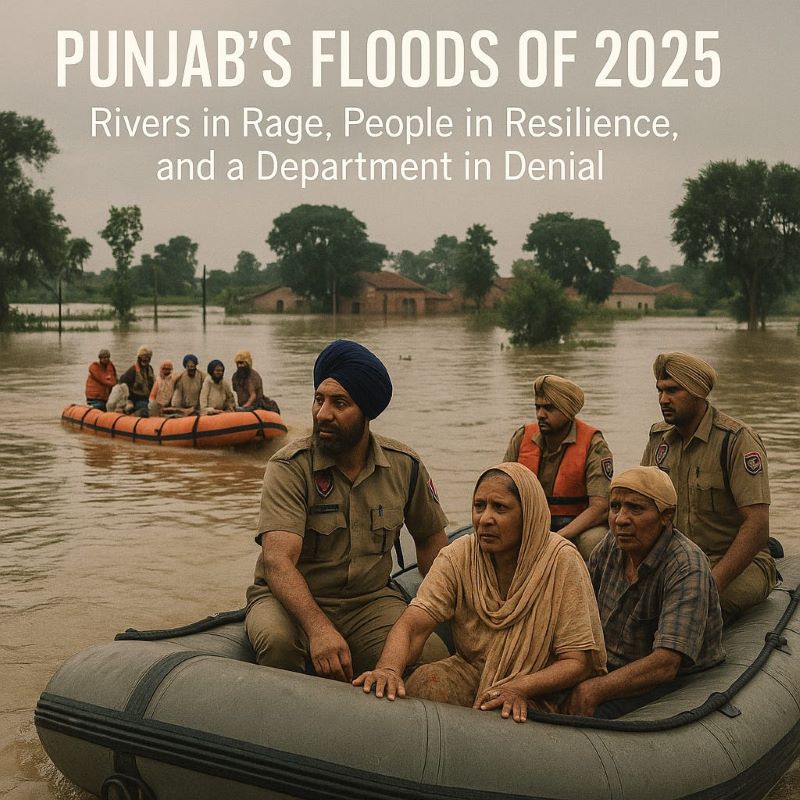 Punjab has long been considered the agricultural heart of India, yet it has repeatedly faced the devastating consequences of floods. Among the worst in recent memory were the floods of 1988, which left deep scars on the state’s economy, society, and psyche. Nearly 9,000 villages were affected, with 2,500 destroyed. Over 34 lakh people were displaced or directly impacted, 1,500 lost their lives, and the bodies of 600 victims were never recovered. This catastrophe affected every segment of life in Punjab — from agriculture and livestock to infrastructure and human survival.
Punjab has long been considered the agricultural heart of India, yet it has repeatedly faced the devastating consequences of floods. Among the worst in recent memory were the floods of 1988, which left deep scars on the state’s economy, society, and psyche. Nearly 9,000 villages were affected, with 2,500 destroyed. Over 34 lakh people were displaced or directly impacted, 1,500 lost their lives, and the bodies of 600 victims were never recovered. This catastrophe affected every segment of life in Punjab — from agriculture and livestock to infrastructure and human survival.
Fast forward to 2025, and Punjab is once again facing floods that are proving to be even more catastrophic. Despite improvements in infrastructure, flood management, and communication, water levels have surged uncontrollably, submerging thousands of villages, destroying crops worth crores, and displacing tens of thousands of people. Early reports suggest that the human and economic toll may surpass even the devastating 1988 floods. Unlike 1988, social media and news channels now bring real-time images of destruction to the world, highlighting both the magnitude of the disaster and the slow response of state machinery.
The comparison of these two events shows that while technology and awareness have improved, the fundamental problems of water management, inadequate preventive measures, and poor planning persist. The 1988 floods were largely a natural tragedy, but the 2025 floods reflect a combination of natural forces and human neglect. Rivers and dams, designed to protect, have in many areas acted like water bombs, turning protective measures into sources of destruction.
Relief measures in 1988 were limited, and the state struggled to provide food, shelter, and medical aid to the affected population. Today, while social and religious organizations have stepped in to support victims, the official response still appears slow and insufficient for the scale of the calamity. Many affected people report that aid is delayed or inadequate, exposing gaps in government planning and execution.
The lessons from 1988 remain relevant but unlearned. Punjab needs long-term flood management strategies, including better dam regulation, robust drainage systems, flood-resistant infrastructure, and community-based disaster preparedness. Awareness campaigns and rapid response units must be strengthened, ensuring that no village is left stranded and every life is protected.
The floods of 2025 are not just another natural disaster—they are a warning. Punjab’s citizens deserve better protection and preparation from their government. Standing with Punjab today means more than sympathy; it requires accountability, strategic planning, and a commitment to prevent such tragedies in the future. If the lessons of 1988 were heeded, perhaps the 2025 floods would not have inflicted such widespread suffering. The time to act is now — for the people, the land, and the future of Punjab.